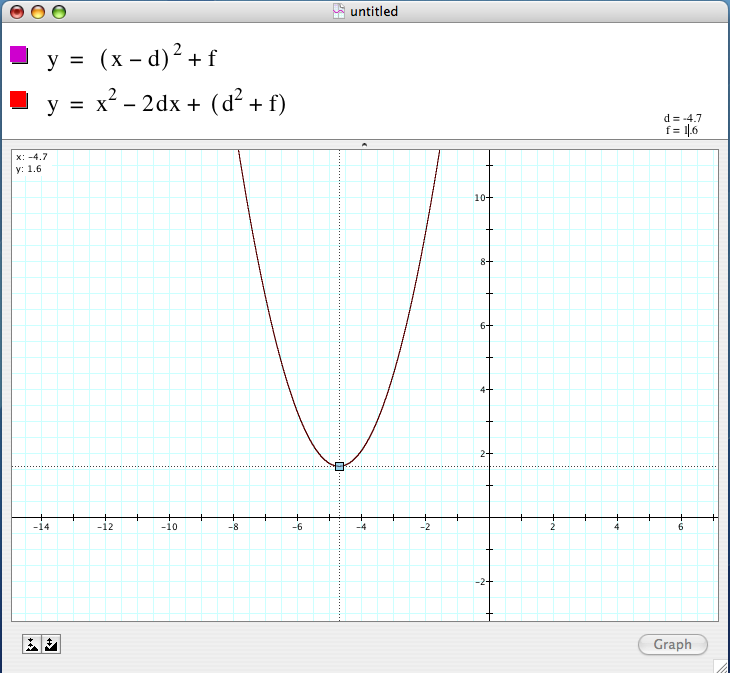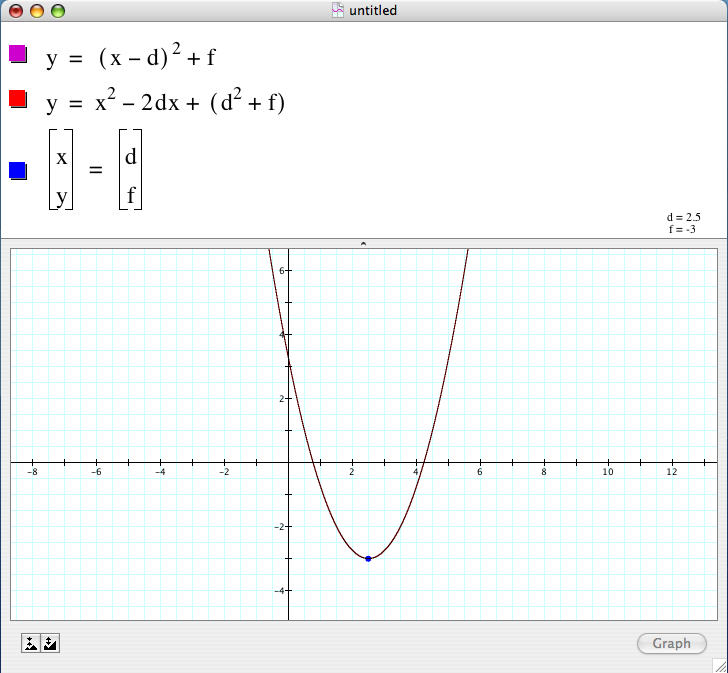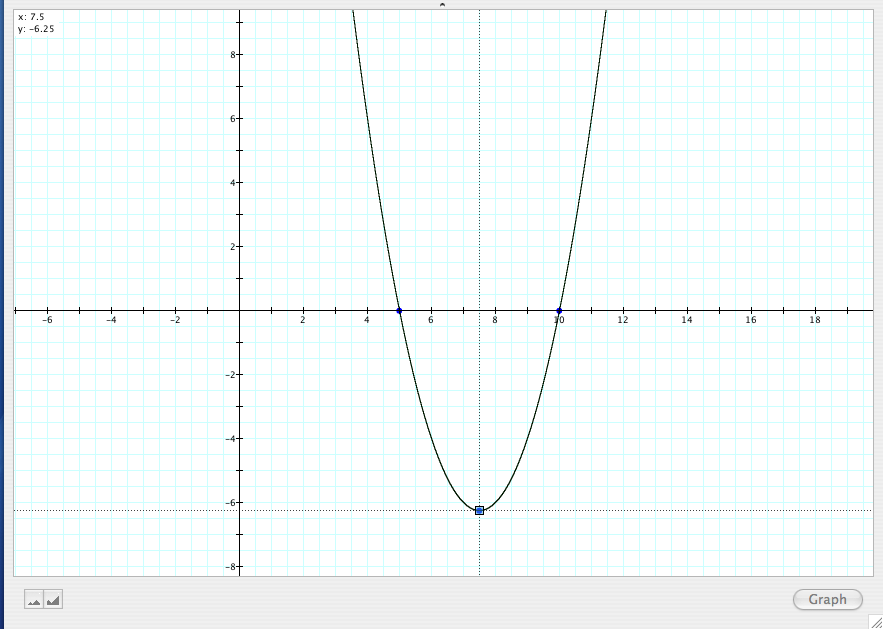

A little exploration with second degree equations
(I did the this write-up (my secondly finished one) on Sep. 25, 2009)
Chen Tian
Here we want to do a little exploration of the following second degree equation ![]() with its appropriate domain and range.
with its appropriate domain and range.
Let's take a look at a special case of this equation, i.e., d=1 and f=1.
^2+1.jpg)
See, the vertex of the parabola is (1,1).
Let's observe another one. The vertex of the parabola is (-3.5,-2).
^2-2.jpg)
If we try more equations we will see the value of d indicates the x entry of the vertex (x,y) of each equation and the value of f indicates the y entry of the vertex (x,y) of each equation. x is the horizontal translation and y is the vertical translation.
It is actually the translation of the curve of the equation. In other words, we change d, f so as to translate the curve to another position with vertex at the new (d,f). The translation formula would be x'=x+d and y'=y+f.
Moreover, if we are given the vertex form of an equation, we can get the expansion of it, as we show in the following figure.

See. The purple graph and the red graph coincide, so the color of the graph looks like brown.
Let's plot the point (d, f) on my graphs using
,
which is the Graphing Calculator 3.5 "2-vector" input and is essentially a parametric equation for a point.

On the other hand, if we are given the expansion of an equation we can transform it into the vertex form, for example:


Have you noticed that the intersections of the curve with the x-axis are two points (5,0) and (10,0)? They are actually the two real roots of this second degree equation ![]() , which actually is a 2-degree polynomial function with domain (-infinity, infinity) and range [-6.25, infinity]. And also we can factor the polynomial
, which actually is a 2-degree polynomial function with domain (-infinity, infinity) and range [-6.25, infinity]. And also we can factor the polynomial ![]() into
into ![]() .The two roots on x-axis a=5, b=10 decide the width of the curve on the x-axis, with is (b-a)=(10-5)=5. On the other hand, if we know the two roots of a two-degree equation, then we get all the roots and so can expand (x-a)(x-b) to get the expansion of the polynomial, namely, x^2-(a+b)x+ab. We can use the formulas about the roots of a quadratic polynomial we learned in high school to check it up, which I omit here. We eventually get at least three ways to express an equation.
.The two roots on x-axis a=5, b=10 decide the width of the curve on the x-axis, with is (b-a)=(10-5)=5. On the other hand, if we know the two roots of a two-degree equation, then we get all the roots and so can expand (x-a)(x-b) to get the expansion of the polynomial, namely, x^2-(a+b)x+ab. We can use the formulas about the roots of a quadratic polynomial we learned in high school to check it up, which I omit here. We eventually get at least three ways to express an equation.
Return to my homepage for EMAT 6680